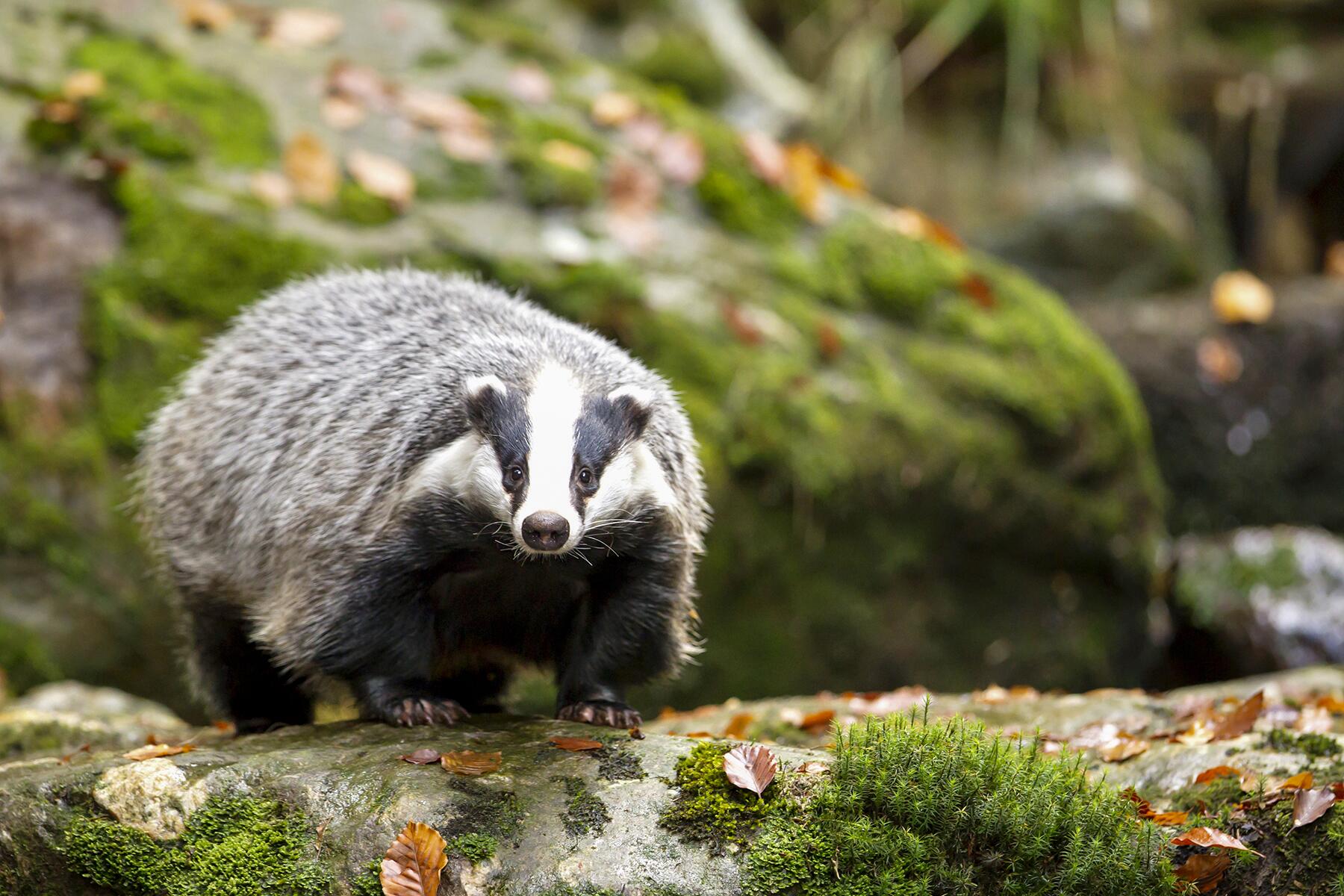Come with me on a woodland adventure with a very cute cast of characters.
German forests have a long history of lore and have inspired many a story and fairytale (rumor has it that the Brothers Grimm took inspiration from the Black Forest when writing Hansel and Gretel). And while the forests contain plenty of myth and mystery, they also contain something, perhaps, even more precious: I am speaking, of course, about really cute woodland creatures. Let’s go on a journey through the woods of Germany and meet the cast of furry characters, shall we?
Top Picks for You
European Badger (The Mother Figure)
One native woodland creature to the German forest is the European badger. A powerfully sturdy lad, this omnivore is known for its obsessive compulsive behaviors (relatable) specifically pertaining to the cleanliness level of their burrows–they obsessively replace their “bedding” and build protective barriers.
The European badger would certainly be the first woodland creature you meet on your forest journey–at first, you would be frightened, but she’d bring you back to her freakishly clean burrow and cook you a nice meal, and before sending you on your way, she would tell you sincerely that if you ever needed anything, you know where to find her.
European Pine Marten (The Trickster)
The European pine marten is a member of the badger and weasel family, and as we all know, weasels are known for their tricks, historically (in a literary sense). These little guys typically build their dens in hollowed forest trees as well in the neighboring grasslands.
If you were to run into one of them in the forest, it would be assumed that they would probably tell you some sort of riddle that you wouldn’t be able to figure out, resulting in them laughing at you. If you were to ask them for directions, they would probably lie to you, as they would think it was hilarious.
Recommended Fodor’s Video
European Wildcat (The Sly Helper Who Wants to Eat You, But Won’t)
The European wildcat looks an awful lot like a regular domestic cat–except a lot bigger and with a fluffier tail. They primarily live in broad-leaved and mixed forests.
You’d meet this forest wildcat early in your forest journey–she’d definitely want to eat you at first but you would win her over with your sincerity (she’d feel bad eating someone so pure). She would give you advice, and despite knowing you should be wary of her generally, you would get the feeling that you could trust her–this time, anyways.
Chamois (The Anxious Mountain Guide)
Chamois resemble goats and are found in more mountainous areas of the woods, typically. They are extremely quick on their feet and can run around 30 miles per hour—and leap horizontally about 19 feet. They can also jump about seven feet in the air.
When you meet one of these creatures on your forest journey, they will be (literally) jumpy when you first happen upon them, as it is most likely disconcerting for them to see a human (due to the fact that their meat is a delicacy in Germany). Once they are assured that you are not there to hunt them, they will help you along your way by showing you a path that will lead you over the mountain–but they’re still probably going to be pretty anxious about it.
The Bicolored Shrew (The Helpful-Yet-Slightly-Curmudgeonly Outcast)
This small forest animal resembles a hedgehog without any spikes. They are nocturnal and eat insects. The shrew has a face that looks like it can’t be trusted, and perhaps you were warned about him from another forest animal somewhere along the way, but the fact of the matter is that he is simply misunderstood. He has given up associating with the other forest animals—he doesn’t even like them and doesn’t care that they think he is a villain. He knows he’s not, so believe him if you want to or don’t—that’s up to you. Frankly, you should appreciate his frankness and trust him, which is the correct approach.
The Alpine Ibex (The Knight on the Cliff)
The Alpine ibex is a type of wild goat that lives in the mountainous regions of the European Alps. Living on such steep slopes and jagged cliffs is added protection from predators, as are their absolutely humongous horns.
They were born to protect themselves and are literally built for it, which leads me to believe that they are the knights of the German forests—and should you meet one on your journey through the forest, it will certainly protect you, should you be in danger (or need help getting up those steep cliffs). At the very least, it would help you along your journey by giving you knowledge to protect yourself.
The Fire Salamander (A Rogue Who Is up to No Good)
These little salamanders live in the wet high altitudes of the forest near small bodies of water (like ponds) and can be recognized by their tiny yellow spots. And although they seem extremely cute and unassuming, they have a secret—they have poisonous glands all over their body, with most of them on their heads. They literally have a poisonous body.
If you were to meet one on your quest through the forest, take caution, because they may look and act cute, but guess what, pal, they will straight up poison you with their body. They are up to no good—stay away from them if you can, they are only looking out for themselves.
The Wild Boar (The Beast Only Trying to Protect Her Family)
The wild boar is one of the widest ranging mammals in the world, so, yes, you better believe you’ll find this guy (or one of its 16 subspecies) in a German forest. These boars live in groupings of females and their babies, with males being mostly solitary.
If you meet one on your quest through the forest, it will most likely think you to be a threat to its children, and try to attack you, initially. However, you may be able to convince one that you are pure of heart, and therefore trustworthy. Then, and only then, will she help you along your journey, and perhaps offer you a place to stay for the night. The baby boars would probably be very excited to play with you, so you might end up becoming some sort of uncle figure to them.
The Greater Horseshoe Bat (The Wise Yet Slightly Frightening Seer)
The Greater European horseshoe bat differs from the other European horseshoe bats in that it is the largest (and therefore the greatest, I suppose). It can live up to 30 years, which is very long for a bat, and hates to travel—at most, it will travel 19 miles when the season commands it (between its winter and summer locations).
Happening upon this bat during your journey might startle you at first, as he seems so sinister hanging upside down in that tree as you pass by, but do not fear—looks can be deceiving and he has no intention of harming you. Although he might give you an ominous warning of what’s to come (scary!), his knowledge will better prepare you for the upcoming trials.
The Red Fox (The Grifter)
The red fox can be found all throughout Germany, and is one of the most recognizable types of fox in the world. This is the fox you think of immediately when someone mentions “a fox”—red fur, a little white “bib” area on its chest, beady little eyes, and an overall tricky looking face. It preys on small animals (but will occasionally eat a vegetable as well). They’re also known for interacting with humans as they rummage through trash (they also enjoy eating trash).
This is the forest’s big bad guy—you can see it in his eyes. He will be the last creature you meet on your journey, and he will probably initially try to befriend you—but do not believe him. He is playing a trick on you, to try and get you to trust him. Do not answer his riddles, follow him into his den, or do him any favors. My advice to you would be to stay away from him!






Really good piece of writing! More stories like this, please! For animal lovers and families with kids this is super interesting!